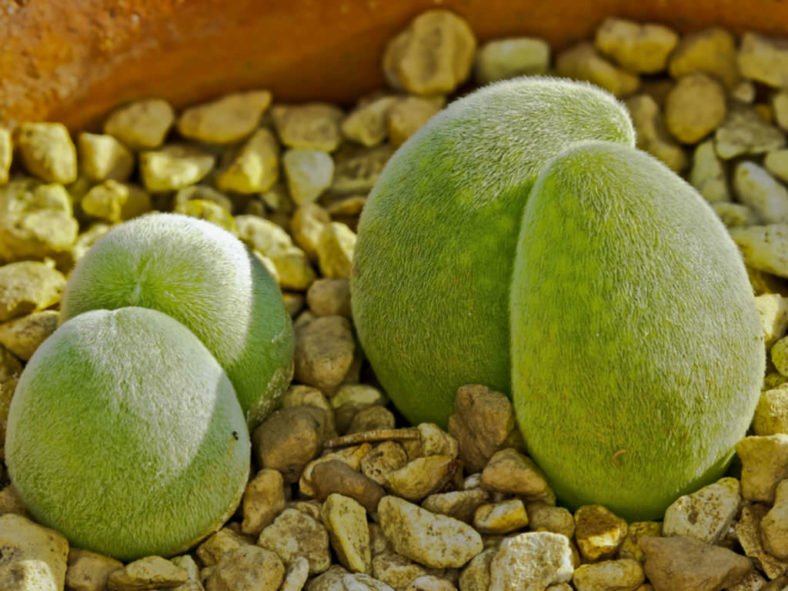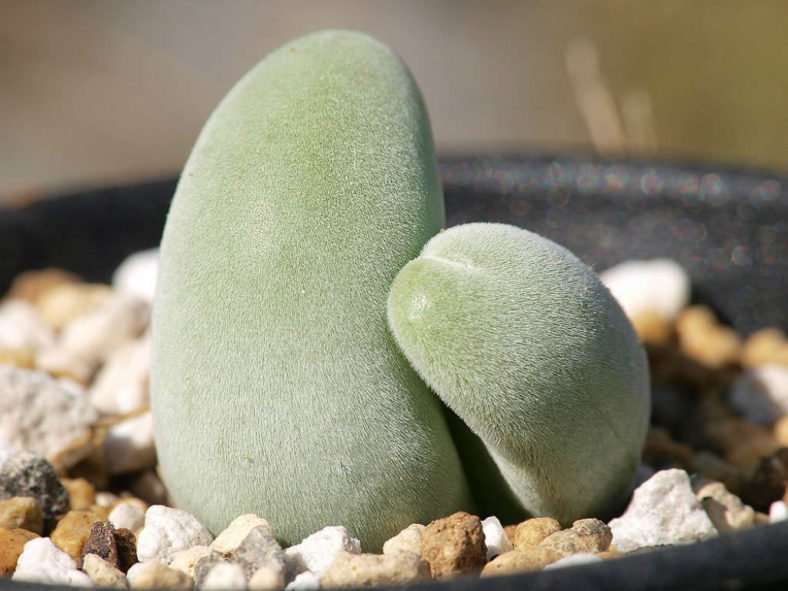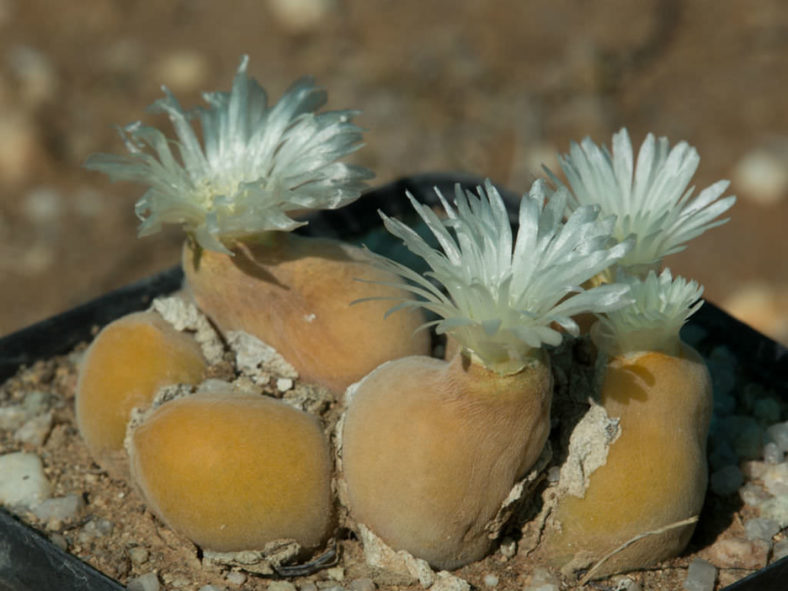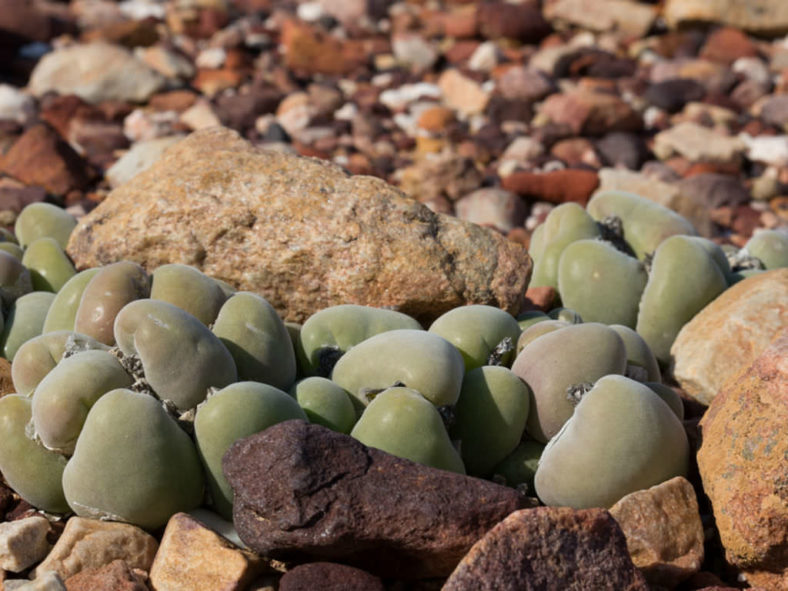Scientific Name
Muiria hortenseae N.E. Br.
Common Name(s)
Mouse Head, Mouse Head Mesemb, Schmoo Plant
Synonym(s)
Gibbaeum hortenseae, Mesembryanthemum hortenseae
Scientific Classification
Family: Aizoaceae
Subfamily: Ruschioideae
Tribe: Ruschieae
Genus: Muiria
Origin
Muiria hortenseae is native to South Africa. It occurs in the foothills of the Langeberg Mountains south of Ladysmith in the Western Cape province.
Description
Muiria hortenseae, also known as Gibbaeum hortenseae, is a dwarf succulent with several short branches, each with a pair of leaves almost entirely fused into one spherical to egg-shaped body. The leaves are covered in soft, downy fur. The bodies turn into a drying sheath towards the summer, enclosing the new developing body. After several generations of subdivisions, the plant can form a dense clump of bodies.
In late spring and early summer, this plant produces solitary flowers from the tiny slit at the top of the body. The flowers are white or pale pink and open during the day. The base of the flower turns into a 5-locular capsule that contains brown seeds.

Hardiness
USDA hardiness zones 9b to 11b: from 25 °F (−3.9 °C) to 50 °F (+10 °C).
How to Grow and Care
Mesembs are mostly adapted to relatively predictable rainfall patterns rather than extreme drought and irregular rainfall. Total rainfall may be extremely low, but water is available at least seasonally or through fog and condensation. This leads to or allows plants that are not especially large and sometimes very small and affects the way they need to be treated in cultivation.
The care basics are simple: well-draining soil, plenty of sun and ventilation, and regular light watering in the right season. Yet the difficulties are endless, trying to adapt to the Mesembs' adaptability and follow their growth habits in your particular conditions.
These plants require a loam-based compost with extra drainage material such as horticultural grit or perlite. They all like good light conditions and plenty of ventilation.
Some are relatively cold-hardy and can even survive mild winters outside. Most will survive temperatures down to the freezing point. Some Mesembs begin to grow in the fall as the temperature drops and the days get shorter.
Learn more at How to Grow and Care for Mesembs.
Links
- Back to genus Muiria
- Succupedia: Browse succulents by Scientific Name, Common Name, Genus, Family, USDA Hardiness Zone, Origin, or cacti by Genus
Photo Gallery
Click on a photo to see a larger version.


